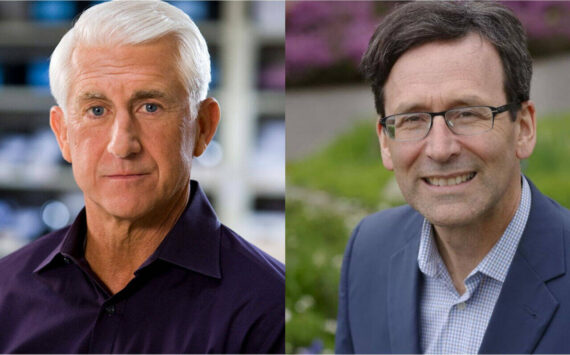By Morf Morford, Tacoma Daily Index
Branding is very strange when you think about it: it is a way to convey to a customer what to expect without necessarily saying anything.
When we go to a place, or even to most websites, even if we have not been there before, whether it is a grocery store, a coffee shop or a fast food place, most of us have about a 90% certainty about what to expect.
No matter what any business is selling, its most important product is connection.
Virtually every market, more than being a market of products is, even more, a market of choices.
Political pundits might make a lot of noise about “cancel culture” or boycotts (or even “buycotts”) but even those slogans and political agendas presume freedom of choice.
The most extreme “cancel” or boycott campaign, after all, is rarely about doing without that product or service entirely – just that specific product or service.
But whether we seek it or deliberately avoid it, it is by the brand name that any product or service is ultimately – or immediately – known.
No customer looks for a massive corporation experience – we all want an individual, even unique experience.
From a quick lunch to the car we drive, we all want, and to a large degree, presume and depend upon, a personalized experience.
The best any company can do (for itself and for its customers) is to move from communicating “brand to fan” to truly talking “fan to fan”.
All manner of “loyalty” programs and buyer incentives, from gas points to air-miles, have entered onto the traditional marketplace.
Not only is every brand, as Warren Buffet put it, “a promise”, it is also an introduction – an introduction to a culture, a carefully crafted cultural experience.
Consider any well-known public gathering place. From McDonald’s to Starbucks, we go there for far more than the food or drinks.
We are, in fact, participating in a cultural experience. We are, in many ways, voting with our feet. And dollars. And our presence.
In fact I would argue that, again often in spite of the fare on the menu, McDonald’s and Starbucks (and a few others) offer something like a secular counterpart to communion – an experience of one-ness with a larger, or at least completely “other” cultural presence.
A taste of home
I’ve often wondered why, in countries far from America, from Italy to China, Americans tend to congregate at the same places they could in their own neighborhoods. From Rome to Berlin to London or Shanghai, and many more, McDonald’s and Starbucks tend to be filled by Americans.
And it is not just for the food – or at least primarily. It is for the literal “taste of home” – the names, the settings, the color schemes and even the packaging holds as much appeal as any menu items.
When I was living in Beijing, I kept an eye out for McDonald’s and Starbucks. They were both places to meet for businesses or “foreigners” and, for me at least they held something Americans take for granted, but are a rarity in many countries; clean bathrooms.
Yes, for me at least, a “taste of home” that I sought while out in the clamorous demands and noise of the city could be found in my little American refuges known as McDonald’s or Starbucks.
I had never appreciated a humble bathroom so much as on the dusty, humid, crowded streets of a foreign city.
The promised land
But I also learned that I was not alone in making the cultural connection between McDonald’s and Starbucks and America.
America, especially to the Chinese, took on a gleaming (and steaming) presence in a local McDonald’s and Starbucks.
America was not only “the home of the free and the land of the brave”, it was the land of the Big Mac and the triple shot espresso or double mocha.
America in the minds of many around the world has been, and to many still is, the ultimate promise, the promise of opportunity, expansion and exploration.
Not every country has, or even ever had, that near magnetic appeal of a promise – not just of refuge but of tangible opportunity unavailable or, for whatever reason, out of reach at home.
America’s brand has been the promise of “life, liberty and the pursuit of happiness” – and of course the possibility of a Caffè Americano on the side.






